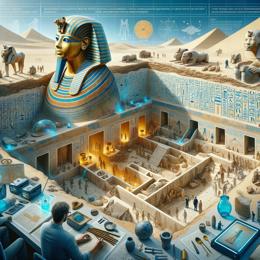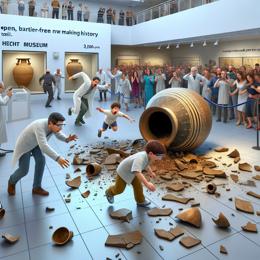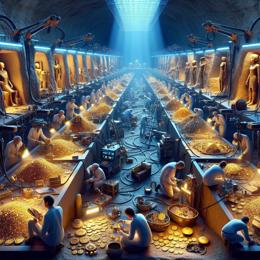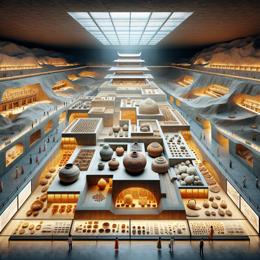Image created by AI
Discovery of 1,200-Year-Old Stupa Unearths Malaysia’s Multicultural Roots
In the bucolic setting of Bukit Choras, nestled among the rice fields in northwest Malaysia, a monumental discovery has thrown a spotlight on the country's ancient past. The uncovering of a 1,200-year-old Buddhist stupa by a dedicated team of archaeologists is not merely an academic triumph but a revelation of Malaysia’s multicultural history, intricately woven through centuries of trade and cultural exchange.
The University of Science Malaysia’s Global Archaeology Research Centre, piloted by chief researcher Nasha Rodziadi Khaw, has excavated the site that lay hidden beneath jungle and decades of accumulated soil. What they found is the most well-preserved stupa in Malaysia, a structure pivotal to Buddhist religious practices, overshadowing the remnants of the Bujang Valley, a known historical ensemble.
Bujang Valley's archaeological significance is immense, featuring an array of protohistoric sites. Yet, Bukit Choras stands a class apart, isolated and erstwhile undisturbed until now. Its solitude speaks volumes of a time when Mount Jerai served as a key navigational landmark for traders braving the seas from distant lands such as the Arabian Peninsula.
The narrative of Bukit Choras transcends the immediate locality, reaching into the broader Southeast Asian context. Stucco statues of Buddha similar in architectural merit to those in Indonesia, and inscriptions in the ancient Pallava script, paint a picture of a time when the Srivijaya kingdom flourished and Kedah was a bustling pivot of international commerce.
What is most unmistakable is the preservation found at Bukit Choras. Two Buddha statues still stand in defiance of time, hinting at a site that remained undisturbed since its apogee. Such preservation is rare, providing a rich, untapped vein of historical evidence waiting to be understood.
The Bujang Valley encapsulates the essence of the Ancient Kedah Kingdom, reflecting a period that saw the harmonious coexistence of multiple religions and ethnicities. Archaeologists speculate that the temples and relics unearthed catered to the spiritual needs of a diverse populace, comprising local workers and transient traders.
Amidst these discoveries arises a narrative of climate-induced transformation, which saw the decline of an ancient civilization. As accessible waterways turned into swamps, the lifeblood of Ancient Kedah – its trade – was severed. Nonetheless, the essence of its multiculturalism persisted, a prelude to modern Malaysia's own diverse character.
The recent findings at Bukit Choras thus resonate with contemporary Malaysia, a mosaic of cultures, religions, and ethnicities, mirroring the pluralism that has been a hallmark of the region since antiquity. It reinforces that multiculturalism embedded in Malaysia's social fabric is not a contemporary inclination but an elemental characteristic dating back centuries.










